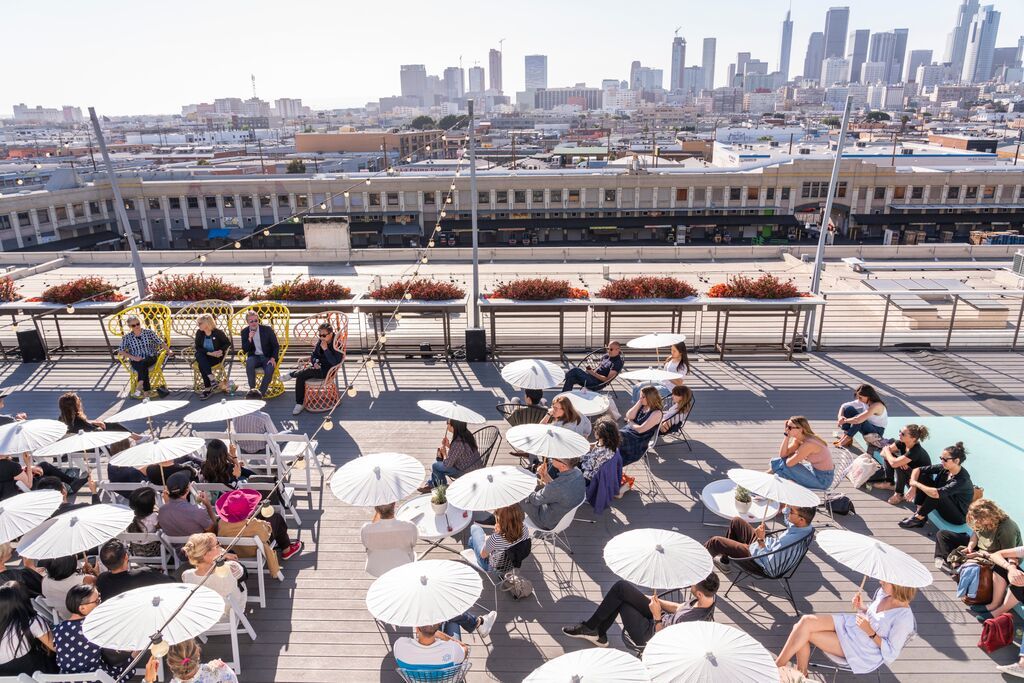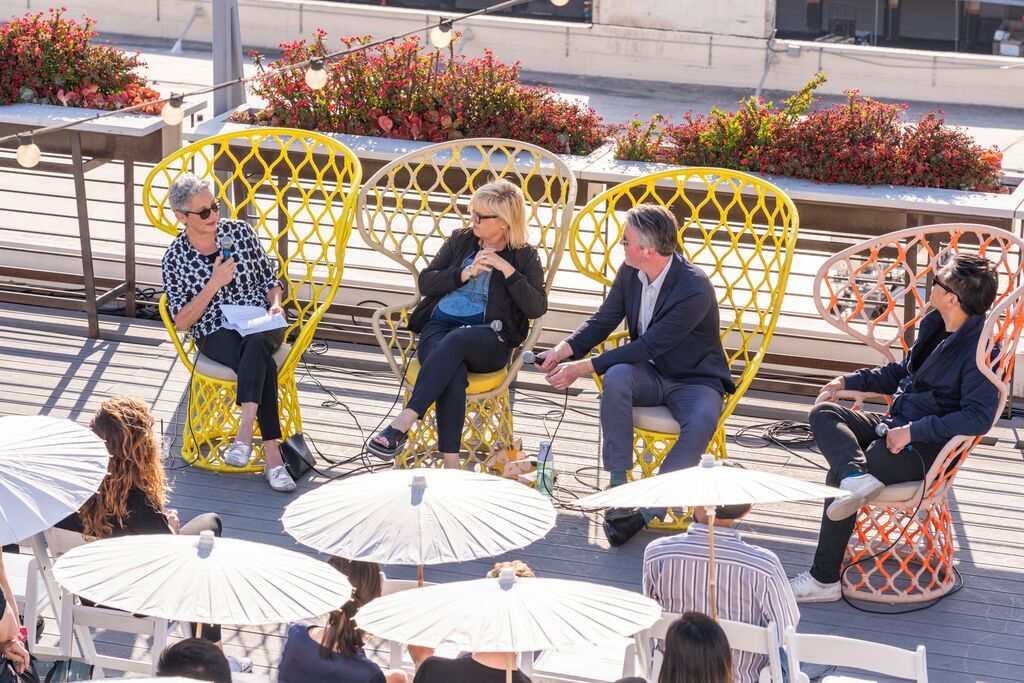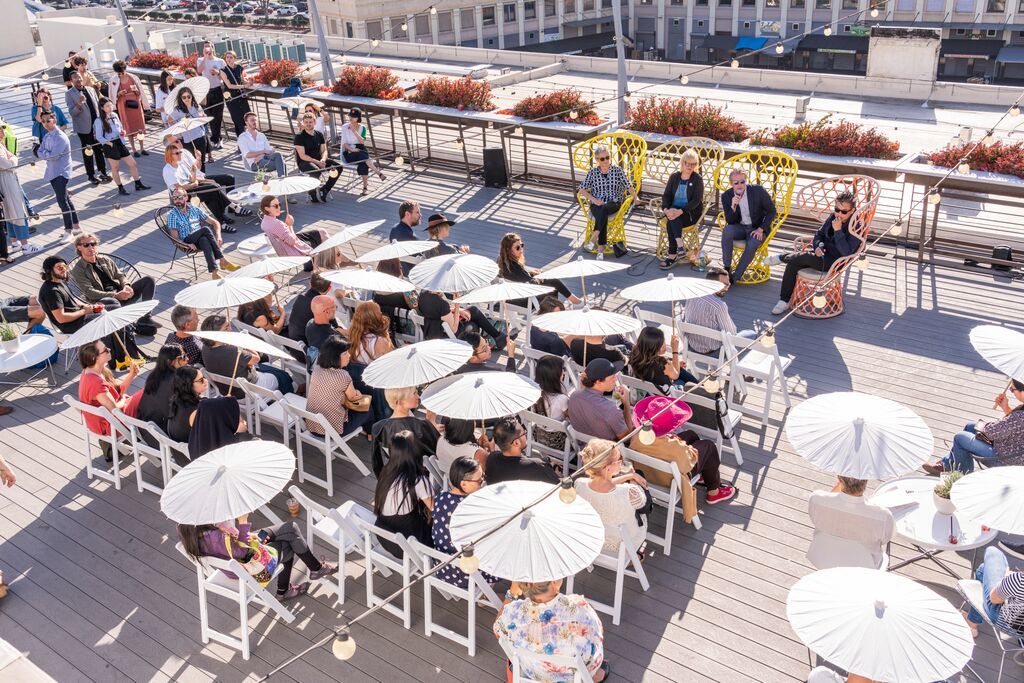The L.A. Design Festival Features 3 Architects on Bringing Experimental Energy Back to the Public Realm
In Los Angeles, the urban fabric is in a state of flux. An extreme housing shortfall compounded over the last several decades has led to a crisis of affordable housing in Los Angeles County, which now needs an estimated 568,255 new low-income housing units to satisfy demand. Consequently, homelessness has skyrocketed to a population of 58,000 people. Roads are crumbling, public transportation is still woefully inefficient, and the looming 2028 Olympic Games could only further exacerbate the city’s notoriously bad traffic.
This period of crisis, however, may also spur the transformation the city has badly needed. Both the mayoral administration and the voting public have expressed their willingness to invest in solutions in recent elections: Measure HHH’s $1.2 billion in bond money to pay for homeless housing; Measure JJJ’s affordable housing mandates and incentives for developers building near transit stops; Measure M’s permanent increase in sales tax to fund the expansion of the city’s public transit.

“We have a clear message as far as our priorities at the ballot box. That for me is one cause for optimism,” says former L.A. Times architecture Christopher Hawthorne, who counts as a source of optimism himself. After more than a decade reporting on L.A.’s architecture and urban planning, he joined the mayor’s office as the city’s first Chief Design Officer, advising primarily on the public realm.
Invited to give the keynote address at the most recent edition of the L.A. Design Festival, Hawthorne opted instead to open a discussion among three local architects—Barbara Bestor, Jimenez Lai, and Julie Eizenberg—not only on public policy that would ameliorate these crises, but in a city in which “so much of the innovation and experimental energy has migrated to the private realm,” some if that could be brought back to serving the public.
A few items on their wish lists are below.
Keep existing buildings; increase the amount of space to build by changing zoning.
With much of L.A.’s land has becoming inaccessibly expensive, developers turn to demolish existing buildings and displacing residents for new build. There is, however, still undervalued land zoned for commercial spaces, Bestor pointed out. A prime example is the land adjacent to the L.A. River zoned specifically for manufacturing. Making that space available for residential construction would add residents rather than displace them; add less traffic and parking complications than an office complex; and give communities direct access to a major public amenity: the longest bike path in L.A.
Increase mixed use.
“Life is more interesting when you mix people,” said Lai, pointing out that residential buildings in Toronto typically have commercial activity embedded in the ground floor. Mixed use not only increases density, it increases neighborly interaction. The “radical privatization” of the region after the postwar years, according to Hawthorne, is when the city moved away from prioritizing shared spaces and adopted its atomized cliche.
Accelerate the approval process for projects with community benefits.
Eizenberg brought an example of a project that incorporated historic preservation, infill, new housing, affordability, and community serves for the mentally ill. Its proposal was still met with 19 modifications from the city, and a single detail for vertical fixtures on the facade took 12 to 15 meetings over a period of six months to approve. “The burden falls on architects’ perseverance,” she said. “Where the projects have a community benefit of significance there needs to be some kind of accelerated process.”

Rethink our relationship with cars.
Improving the city’s public transit has myriad obvious benefits, but a less obvious benefit would be removing the high cost of parking spaces—both the monetary cost of their construction and the precious space that they occupy. Lai even floated the possibilities of the autonomous vehicle, which could have the potential of never having to be parked.
Reign in student debt.
While Los Angeles has a tremendous history of experimental multi-family housing models, Lai argues that even architects and architecture students who are passionate about inventing housing crisis solutions lose their ability to invest and experiment as their debt upon graduation spirals out of control. “With upwards of $250,000 on their backs, in what scenario can a motivated, ambitious, experimental individual take on more risk?”
Get everyone involved in the Olympics.
With an entire decade to prepare, Bestor said, the Olympics hold tremendous opportunity for involvement across the world of design, not only in the construction of infrastructure. “We have a duty to represent the kind of diversity and varieties of creativity we have in the city,” she said, which could include creating streetscapes and wrapping new buildings with artwork. “It’s a question of A) Making that a priority and B) Involve people in all parts of the city so that it’s not an elitist, single design enterprise.” An added perk of emphasizing L.A.’s creativity would be to override what Bestor calls the “hideous generic” taking over new buildings.
Make new precedents in affordable housing ratios.
“There should be city-sponsored projects that make statements relative to what you can do,” said Eizenberg, using Santa Monica’s progressive stance on affordable housing as an example. While developers have argued that steep affordable housing requirements are unaffordable to build, the city put out an RFP for a 160-unit housing project 50 percent affordable units, and the developers at Related picked up the project. “That’s telling everyone that this counts. We could have a much more affordable housing than we’re seeing.”
